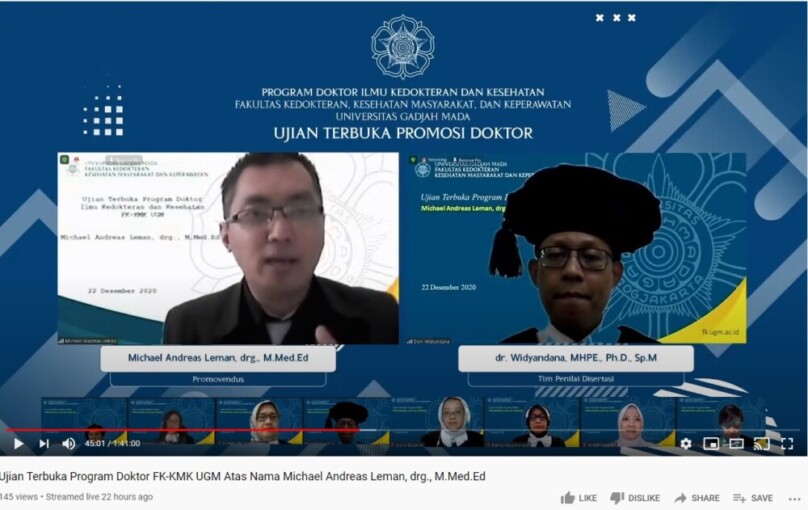
The World Health Organization (WHO) has made higher education institutions one of the places for implementing health promotion actions since 1995. Medical education institutions as one of the educational institutions have a huge responsibility and role in implementing health promotion actions to produce medical graduates who can also be healthy role models.
“Still, up to this moment, there has been no publication on the definition and characteristics of healthy role models in medical education institutions,” explained drg. Michael Andreas Leman, M.Med., Ed., in his remarks in the online opening examination for the doctoral promotion of the Doctoral Program in Medical and Health Sciences, FKKMK UGM on Tuesday (22/12).
He added that this condition caused challenges in identifying the presence of healthy role models in medical education institutions. Therefore, the Sam Ratulangi University lecturer conducted more profound research to examine a healthy role model’s definitions and characteristics in medical education institutions, namely UGM Faculty of Medicine, Public Health, and Nursing (FKKMK). Then, identify the education staff as healthy role models in medical education institutions, and explore the factors that promote and limit healthy role models from doing healthy modeling effectively.
The research result of Andreas Leman entitled Healthy Role Model in Medical Education Institutions shows that cultural factors of the state influence the definition and characteristics of healthy role models in medical education institutions. In fact, it is because research respondents only mentioned the healthy spiritual characteristics from Indonesia and not respondents from abroad.
Another finding revealed that all education staff at UGM FKKMK involved in research are healthy role models in medical education institutions. However, only a tiny proportion of them implement healthy role modeling effectively.
“There should be an improvement in the healthy role model in education staff so that they can do healthy role modeling effectively to support initiatives as a health-promoting campus,” he said.
Moreover, he also conveyed several inhibiting factors in the campus environment that hinder teaching staff from adopting healthy living behaviors. One of them is the burden of responsibilities and obligations as a medical education institution’s teaching staff. Furthermore, there is also a lack of self-motivation to live a healthy life, physical boundaries for healthy living behavior, and environmental factors.
Author: Ika
Translator: Natasa A


